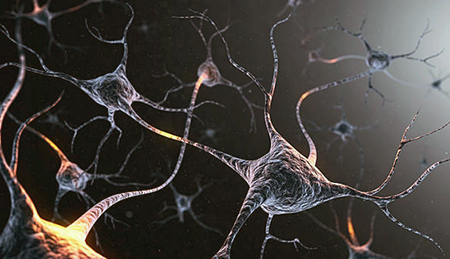Causes, symptoms and diagnosis of multiple sclerosis


Many diseases, unfortunately, are still incurable in the modern world. One of them is multiple sclerosis which is an autoimmune disease meaning that the body itself or the improper immunity functioning are causing the disease manifestations. Read about the causes, manifestations, diagnosis and treatment of the disease in this article.
Multiple sclerosis - what is it?
Short information about multiple sclerosis
With an autoimmune disease, the human body, instead of fighting off infections and harmful bacteria, begins to attack its own healthy cells, which leads to organ damage, disability and even death. Multiple sclerosis (MS) is one of the most frequently diagnosed autoimmune diseases. The disease occurs between the ages of 10-50, but most often around the age of 30. Women are more at risk of getting sick, but their MS progresses more slowly.
MS is a disease of the central nervous system (CNS) that interferes with the brain's ability to transmit and receive various signals. The disease has the word “multiple” in the name because it affects several parts of the brain and/or spinal cord.

The brain acts like a telephone switchboard directing electrical impulses along the nerves to various parts of the body. These impulses govern all our movements. The healthy nerves are isolated by the myelin sheath, i.e. a protective layer that allows electrical impulses to travel freely along the nerves.
In multiple sclerosis, myelin is destroyed and the scars form in the area of myelin loss. Scarred tissue can distort or even completely block the impulses transmitted to the nerves. As a result, it becomes more difficult for the patient to control their body, since nerve impulses do not reach their goal.
The action of the body's immune system in MS
The human body is protected by a special system that destroys viruses and microbes that enter it. In people with MS, this defense system can attack the cells of their own bodies and it's not clear why.
Virus or microbial attack
MS can be caused by a common virus or microbe or both.
- An attack by viruses or microbes and the body's immune response to this attack.
- Viruses or microbes infecting cells.
The body's immune system mistakenly attacks not only viruses and microbes but also the cells themselves.
Several misconceptions about multiple sclerosis

- Misconception: MS is fatal.
Fact: The majority of patients with MS have a normal or near-normal life expectancy.
- Misconception: ultimately, multiple sclerosis ends in paralysis.
Fact: The majority of patients with MS can walk on their own.
- Misconception: multiple sclerosis can be transmitted from one person to another.
Fact: There is no proof that a person with MS can pass it on to another person through accidental touch or sexual intercourse.
- Misconception: There is no point in treating MS as there is no cure.
Fact: Today there are medicines that can slow down the development of multiple sclerosis and relieve many of the symptoms of the disease. Even lifestyle changes can drastically change the quality of life.
MS can have a significant impact on loved ones. They have to partially bear the financial expenses, do additional housework and provide moral support to a loved one suffering from the disease.
Types of multiple sclerosis
Modern classification of MS is made based on disease dynamics. The following types of pathology are distinguished:
- Clinically isolated syndrome is the first manifestation of multiple sclerosis. It is distinguished as a separate type, since at this stage it is not clear what type of pathology will develop;
- Remitting multiple sclerosis is the most common type, characterized by alternating remissions and relapses (exacerbations). During periods of remission, partial or complete restoration of impaired functions is noted;
- Secondary progressive MS is the type of course in which neurological disorders increase steadily. There is no clear division into periods of exacerbation and remission;
- Remitting-progressive MS is characterized by pronounced exacerbations after which subsiding, a gradual increase in violations continues;
- Primary progressive multiple sclerosis is a type of course when, from the very beginning, the disease progresses steadily without obvious exacerbations and remissions. This type of MS affects about 10% of patients.
It is impossible to immediately determine how the disease will proceed in a particular patient. In general, the most common - remitting - multiple sclerosis often has the most favorable course among other types of the disease. However, the life expectancy and the degree of disability of the patient depends on how much the body recovers after each relapse, and how quickly the disease turns into a progressive form. Some researchers even distinguish such types of multiple sclerosis as benign (within 15 years, if the patient does not receive treatment, there is no serious deterioration in function) and malignant (the disease progresses very quickly and leads to severe disability within two to three years).
Multiple sclerosis causes

Despite all the medical research carried out, doctors still cannot answer the question of why multiple sclerosis occurs. Experts talk about three groups of reasons that often lead to this disease:
- Genetic - MS is not a hereditary disease, but the risk of the disease increases with a certain combination of genes;
- External - poor ecology, geographical location (more often pathology occurs in the northern regions), increased radiation background, exposure to toxins, injuries and operations, infections and viruses;
- Behavioral - smoking, stress, eating habits, significant mental stress.
Symptoms of multiple sclerosis in men and women
The manifestations of MS are very diverse and depend on where the plaques develop in the brain. Moreover, symptoms can come and go, making the diagnosis difficult. These symptoms are often so mild that the patient does not seek medical help. Besides, other diseases of the CNS and certain mental conditions are accompanied by symptoms similar or even identical to those of MS.
The most common symptoms of the initial stage of multiple sclerosis in men and women are:
- Weakness,
- Fatigue,
- Spasticity (increased muscle stiffness or muscle spasms),
- Recurring vision problems (loss of vision, blurred vision, diplopia [visual impairment, in which the images of objects that the patient sees are double], etc.),
- Numbness or tingling of the extremities,
- Impaired coordination of movement,
- Dizziness,
- Gait disturbance, rocking, or unsteadiness when walking,
- Tremors (shaking) or involuntary movements.
Less common first symptoms are:
- Pain,
- Urinary disorders,
- Epilepsy,
- Bladder or bowel dysfunction, or problems with sex life (impotence),
- Speech disorders,
- Partial or complete paralysis of any part of the body.
With the progression of the disease, the first signs of multiple sclerosis become more and more pronounced, new symptoms are added, the state of functional systems as a whole deteriorates significantly. Possible, but far from necessary, the following manifestations can also add:

- Vision may decrease to 0.1 or less, often one eye sees better than the other;
- Speech function is gradually impaired - from mild confusion and difficulty of speech to the inability to speak and swallow;
- Muscle strength gradually decreases until complete immobility;
- Primary minor violations of coordination can turn into a complete impossibility of normal directed movements;
- Body sensitivity may disappear on the whole body except the head;
- Intellectual abilities are reduced, in severe cases, dementia develops;
- With severe damage to the pelvic organs, urinary and fecal incontinence is observed.
Of course, the listed extreme degrees of violations occur with a very long course of the disease, or in the absence or low quality of treatment. Early diagnosis of multiple sclerosis and proper therapy help patients live their entire lives without significant disability.
Diagnosis of the disease
Determining multiple sclerosis is usually quite difficult: this pathology has much in common with other diseases of the central nervous system. The first step is to see the patient and ask them if they have symptoms of MS. For a preliminary diagnosis, it is sufficient to have two or more exacerbations lasting a day or more, with an interval of at least a month.

- The main diagnostic method is magnetic resonance imaging: lesions which are characteristic sign of the disease are visible in the images. Nevertheless, MRI does not give an accurate answer about the presence of pathology (in the absence of other studies).
- Sensory evoked potentials study is quite informative: it allows confirming the presence of multiple sclerosis on the basis of measuring the signals that the brain sends to the body under the influence of impulses.
- In addition, cerebrospinal fluid examination is often prescribed: MS is characterized by an increase in the level of oligoclonal immunoglobulins. A blood test will exclude diseases similar in signs to multiple sclerosis.
There are two main signs of multiple sclerosis:
- Symptoms appear in different parts of the nervous system;
- Having at least two separate bouts of illness.
Disease stages
To assess the severity of the pathology and the general condition of a patient with multiple sclerosis, there is an expanded scale for assessing disability EDSS (Expanded Disability Status Scale). On this scale, patients can be divided into several subgroups:

0-3.5 points - disorders caused by multiple sclerosis. Allows patients to work in full capacity as they do not need outside help;
4–5.5 points - there are various degrees of limitation of motor activity. The patient may experience difficulties in performing certain types of activities, the distance that the patient can overcome on their own is limited (no more than 50-100 m);
6–6.5 points - the patient can walk only with one-sided or two-sided support;
7 or more points - the patient cannot move independently, movement is possible in a wheelchair.
The scale of functional systems is also widely used: it allows you to assess the degree of damage to the optic nerve, disorders of the cranial nerves, coordination, sensitivity, functions of the pelvic organs, symptoms of damage to the pyramidal path and changes in intelligence. In the study, a point system from one to five to six points is used, where one is minor violations, and a five or six indicates serious damage.
Treatment of multiple sclerosis
Multiple sclerosis is treatable but cannot be completely cured. However, there are many ways to help patients maintain independence, feel comfortable, and keep working.
The treatment can include the following:

- Living a healthy lifestyle. It is extremely important to carefully monitor your health, to beware of infections and other diseases. Pay particular attention to the following points: do regular exercise (consult with your doctor before starting an exercise program), consume nutritious food (make sure you eat products of each of the 5 food groups every day), get enough sleep, in case of infection, seek immediate medical attention.
- Drugs. There are many medicines that can help with one or another symptom of MS. For instance, in muscles spasticity muscle relaxers such as Tizanidine are used.
- Physiotherapy. Special exercise programs, including water physiotherapy, can help people regain control of their muscles after acute attacks.
- Occupational therapy. This type of treatment helps people with disabilities to remain as independent as possible. For example, patients can be teacher new ways of dressing, cooking, driving, etc. They can also be trained to use special equipment and make adjustments in their apartment, workplace, or car to make them feel as confident and comfortable as possible.
- Treatment of speech defects. There are people who find it difficult to talk due to weak muscles and lack of coordination. Treating speech defects with a speech therapist can help improve speech skills and quality of life.
- Counseling. Individual and group treatment can help people with multiple sclerosis and their families cope with depression, anxiety and disabilities caused by multiple sclerosis.
Of course, multiple sclerosis is a serious disease that causes a lot of inconvenience both to the patient himself and to his family and friends. Despite the fact that this disease cannot be completely cured, specialized therapy helps to slow down its course and stop symptoms. It is better to start treatment in the early stages of multiple sclerosis, however, specialized geriatric centers can help patients with a more severe form of the disease.
Post by: John Johansson, M.D., Amsterdam, Netherlands
(Updated at Apr 14 / 2024)
Zanaflex articles:
Some of the trademarks used in this Web Site appear for identification purposes only.
All orders are reviewed by a licensed physician and pharmacist before being dispensed and shipped.
The statements contained herein are not intended to diagnose, treat, cure or prevent disease. The statements are for informational purposes only and is it not meant to replace the services or recommendations of a physician or qualified health care practitioner. If you have questions about the drugs you are taking, check with your doctor, nurse, or pharmacist.